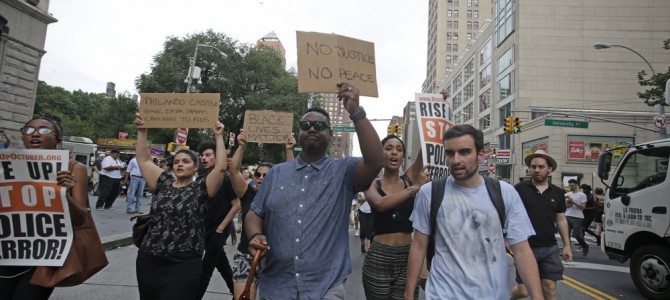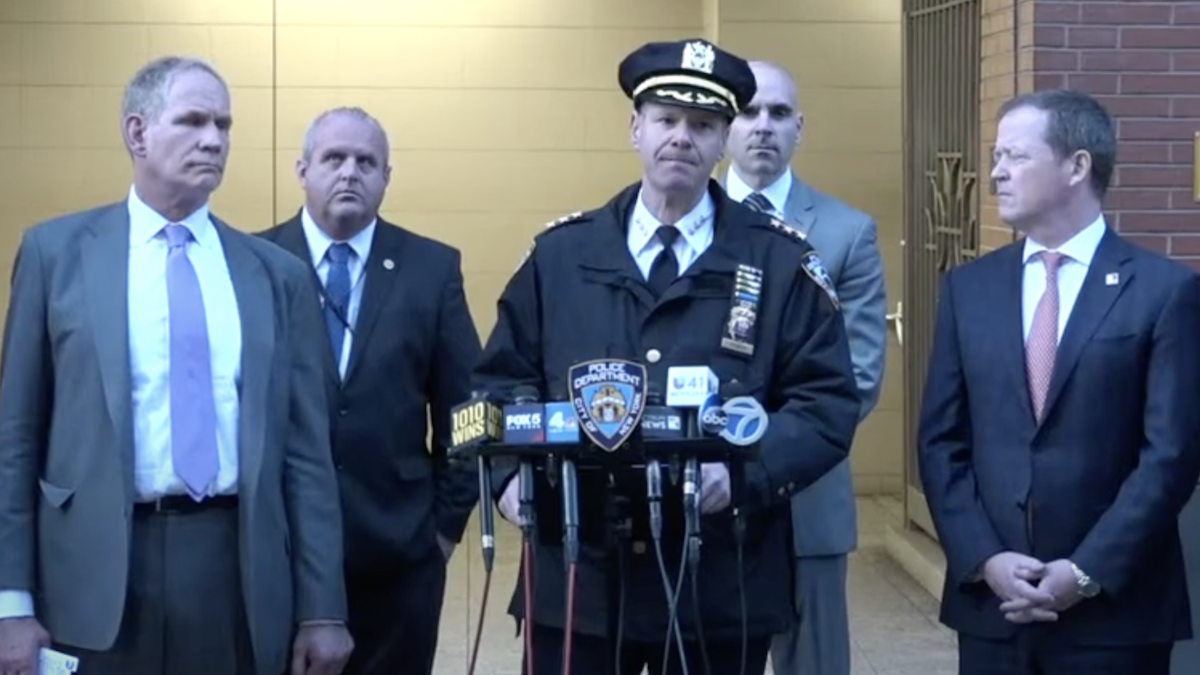
If you believe America’s police target black people for harsh treatment simply because of the color of their skin, then there is a good chance you have listened to Al Sharpton and his National Action Network and consider them credible observers of the country’s social scene. America’s newspapers and media routinely pass along Sharpton’s sentiments as though they represent reality.
But the Tawana Brawley affair, whose upcoming 30-year anniversary is next year, suggests the sentiments social justice activists represent aren’t so much the real issues blacks face in America, but rather artificial narrative-making.
On November 28, 1987, teenager Tawana Brawley was found in a trash bag with the words “n—-r” and “b—h” scrawled on her body in feces. She told the police who investigated her case that two white men had abducted her and dragged her into some woods, where they and four other white men brutalized and raped her for four days.
One of her attackers, she said, had blond hair, a holster, and a badge, and a second was Stephen Pagones, at the time a Dutchess County prosecutor. Bill Cosby and Spike Lee were among the celebrities who lined up behind Brawley, and Sharpton, at the time a still relatively unknown social justice activist, signed on as one of her advisers.
A grand jury that heard from 180 witnesses and met for seven months concluded in 1988 that the entire story was made up. As a result of the affair, Pagones’ marriage failed and he lost his job as a prosecutor. In 1998, he won a defamation lawsuit against Brawley and her advisers, including Sharpton. Johnnie Cochran and other benefactors paid the advisers’ share. Brawley, who today works under an assumed name at a retirement facility in Richmond, Virginia, is still paying her own share through wage garnishment. Neither Sharpton nor Brawley have ever apologized for the hoax.
Stage a Drama and Sell It as Real
American scholars have theorized about such narrative making and the organizations and leaders that carry it forward. These scholars include Robert D. Benford of the Sociology Department at the University of South Florida and William Gamson at Boston College. Gamson is also the co-director of the Media Research and Action Project, which advises social justice organizations on how to frame their arguments so that their audiences will find them persuasive.
Social movement organizations are organizations of power, Benford has written, and they communicate by interpreting grievance through drama, which includes roles and characterizations, performances, orchestrating emotions, sustaining tensions, and controlling information. He says their dramatic techniques include scripting scenes according to the collective consciousness, developing evocative vocabularies and dialogue, staging scenes, and interpreting the scenes, which includes controlling the meaning of symbols.
Activists appreciate the need for power, Benford says, and through drama socially aware actors can not only exercise the power they possess, but the power they are able to make others think that they possess.
In his classic “Encounters with Unjust Authority,” published in 1982, Gamson discusses the role of critical incidents, or crises, in collective action. Look for critical incidents, he says, because they can serve as a “red flag” to mobilize the public to a cause. A critical incident breaks the public away from society’s dominant belief system and inclines it instead toward the activists’ alternative vision. It also helps delegitimize established authority in favor of reformers’ authority, and transforms people from being simple observers to loyal and committed organization members.
Gamson also discusses what he and others have called the “Injustice Frame,” or an encounter with an authority wherein an advocacy organization contextualizes the competition as a grievance. In positing the “Injustice Frame” at the start of a critical incident, the social justice organization makes the frame’s tenets into reality: “When an injustice frame becomes the basis for collective action during an encounter,” he writes, “we have an opportunity to observe its spread and eventual adoption as it is happening.”
Tawana Brawley’s Successors
Time after time, the successors to the Tawana Brawley case have failed to describe what actually happened during the critical incidents they sensationalize, despite their success in mobilizing headlines and generating donations for their associated social movement organizations. These successors include Black Lives Matter, which has used these activist dramatic techniques, critical incidents, and injustice framing.
Michael Brown in Ferguson did not display “Hands up, don’t shoot;” the officers in Baltimore did not give Freddie Gray a ride that killed him; a New York City officer did not use an illegal chokehold to kill Eric Garner; Keith Lamont Scott in Charlotte was carrying a gun, not a book.
In Chicago, where a white officer shot a black youth 16 times even as the teen lay motionless on the street and the event actually did constitute excessive force, organizers were uncharacteristically quiet. Rahm Emanuel, a former chief of staff of President Obama and ally of presidential candidate Hillary Clinton, was Chicago’s mayor, so he didn’t fit the description of an “unjust authority.”
Narrative-making in social affairs has high costs. Narratives from BLM and Sharpton trivialize real problems in the black community and distract from efforts to deal with them. The recent “Police War on Blacks” storyline caused local police departments to lose their autonomy to federal authorities, ruined the careers of good officers, inflamed tensions in police-community relations, and endangered poor communities by causing police to pull back.
Such costs are ultimately worth it, theorists and organization leaders will say. They think we are building the great progressive future where a compassionate and enlightened elite holds the reins of power in the United States. If in the process a few eggs are broken, it’s alright, because you can’t make an omelet without breaking eggs.
This article has been corrected regarding William Gamson’s employer, which is Boston College, not the University of Boston.









